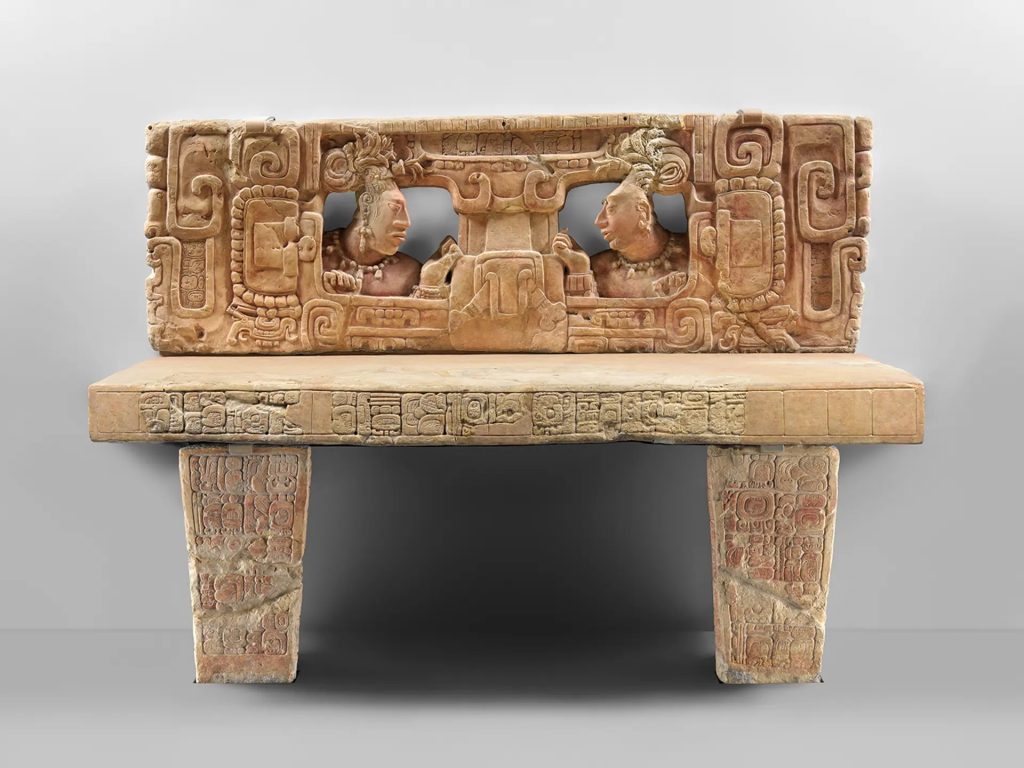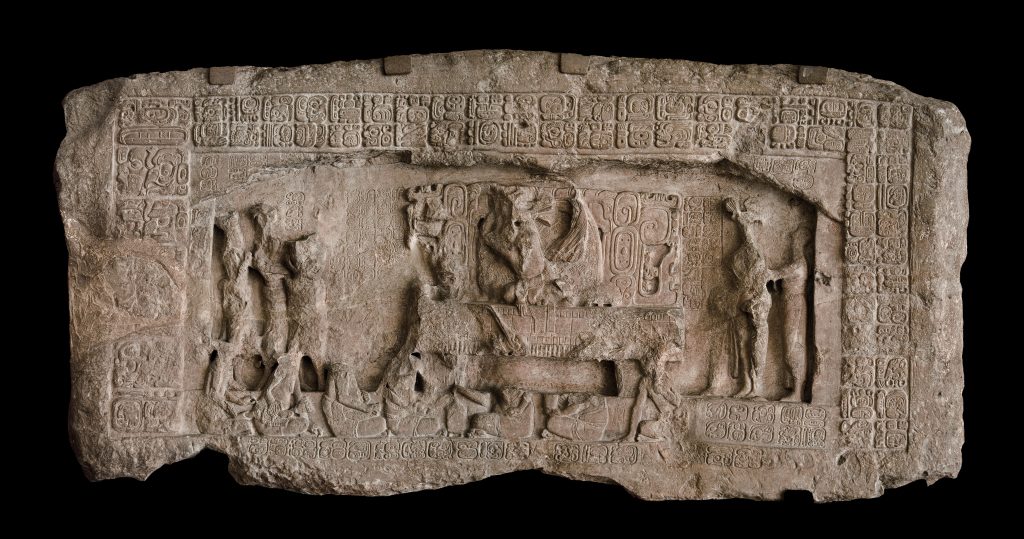As learned from this week’s module, art museums are institutions that collect artistic items primarily as a means of unaided communication with its visitors. Therefore, in this week’s discussion, I am sharing a recent article that discusses the topic of an ancient Maya throne artifact loaned from the Guatemalan government to the Met Museum in New York. The Met Museum, also known as the Metropolitan Museum of Art, is a museum with a private collection of about two million, which is split amongst seventeen curatorial departments.
To summarize, the Guatemalan government had lent a Mayan throne artifact (see photo image) to the Met with the intentions of having the artifact, along with another Mayan panel artifact, restored. This international loaning of Mayan artifacts struck controversies between the Guatemalan government, the Met Museum, and the indigenous organizations (and archaeologists) of the Mayan religions. One of the reasons for this controversy is that the Guatemalan law prohibits the international loan of Mayan artifacts for exhibition. Thus, making the restoration and exhibit display of the Mayan artifacts within the Met Museum illegal by Guatemalan law despite the Guatemalan’s Ministry of Culture and Sports stating this specific international exchange as an exception. Another contributing factor to this controversy is that the indigenous and Guatemalan communities, in an open letter, viewed this international exchange as basically another exploitation of their cultural heritage by the Guatemalan government and the Met Museum.


The article I have shared in this week’s discussion does a good job at giving an overview of the controversy, but glazes over it while focusing more on creating a positive narrative on how great the restoration of the Mayan artifacts are. It’s important to note that within the article the Met Museum reported having involved the correlating Mayan communities (and the Guatemalan government) with the restoration process and consulting the communities before resuming with any restoration processes. Although it appears the correct procedures of involving related groups in the restoration process, the museum did definitely flop in procedures when it came to exhibiting the artifacts without the consent of the Mayan communities and only went ahead with exhibiting these artifacts with only the Guatemalan government’s consent. Museums, from my experience, seem to be great at exhibiting artifacts without the relating communities’ consent and would at times only gain the consent of parties that will go along with their mission (as it appears in the case of this article).
My question is how have you experienced (whether through virtual or physical means) museums exhibiting cultural artifacts with or without the consent of the artifact’s affiliated indigenous community?
The URL link to the article: https://news.artnet.com/art-world/indigenous-groups-decry-guatemalas-loan-of-an-ancient-mayan-throne-to-the-met-2244019
This is a great post, and it really got me thinking about the consent of the communities whose heritage is displayed in museums. I know the British Museum has come under intense scrutiny for their displays of items – the Elgin Marbles, for example, came from the Parthenon in Athens, Greece. The Greek government wants them returned, but the British Museum has so far refused, using the excuse that Greek museums can’t properly care for them. I find that a little unlikely, but then again, i don’t know the full story.
Thanks for this thought provoking post Rose! It really makes me think about the Robert E. Lee statue in Richmond, Virginia. The statue was the center of many Black Lives Matter protests in 2020 and has become a very significant place and object in Richmond amplifying the voices of so many who gathered there to protest. It is being moved to a Black history museum in Richmond but there is a lot of controversy over what should be done with it. Some people think it should be removed completely, others think it should remain a safe gathering place for locals, and of course some people think it should be in a museum. Depending on how you view the subject, you will think differently about it. But it does make me question, what is the morality of museums obtaining objects without the consent of the people who find the object significant? Is there a better way to go through this process than the current standards of today?
That’s a great question. I honestly don’t know if any of the museums I’ve ever visiting followed laws and were respectful to the peoples in which the cultural artifacts originated. Definitely a question I will ask from here instead of taking for granted that these institutions are doing the right thing by the people.
Thanks for bringing this article to the attention of our class. It’s a great example of how far removed large, government museums can be from the descendent communities of their collections. Powerful urban museums with highly specialized staff have the ability to negotiate deals like this, and while the conservators say they undertook the treatments in consultation with members of the Maya community, clearly they missed the boat from the very initiation of the deal. That consultation should have happened long before the items ever left Guatemala.
Museums need to do better at understanding the significance of our collections to descendent communities, and honoring their wishes as part of our duty of care. National museums, in particular, are there specifically to care for the collections on behalf of all the people of that country! We’re all at different places in this continuum of change and I hope the Met also learns from this reaction. Unfortunately, it’s sometimes the big, powerful museums who are the last to shift their practices – especially if actions like this generate a lot of visitation.